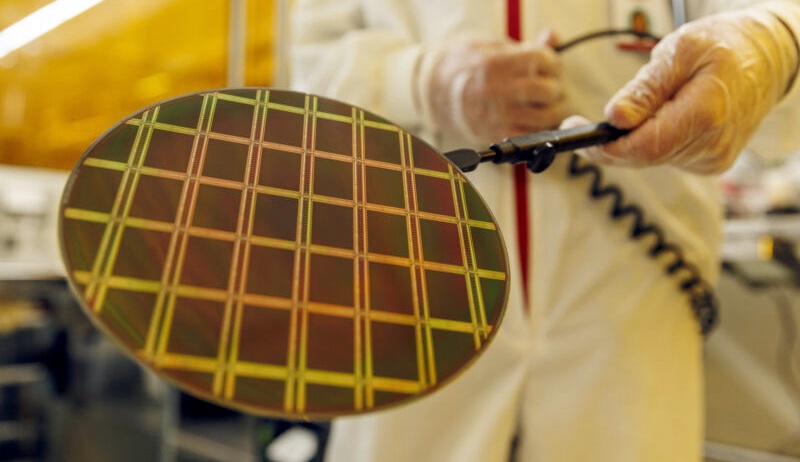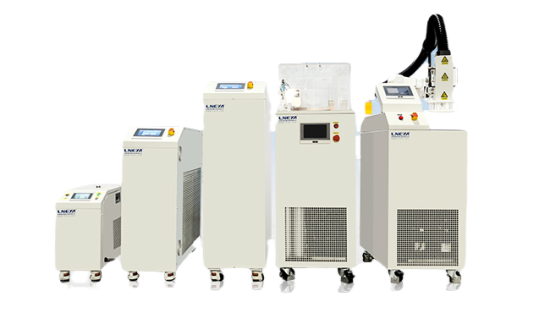Semiconductor Chillers in Packaging: Boost Reliability and Performance

- What Is a Burn In Chamber
- Why Chip Testing Needs Semiconductor Chillers
- Semiconductor Chillers in Chip Testing
- Semiconductor Chillers in Wafer Dicing
- Semiconductor Chillers in Packaging
- How to Upgrade an Old Chiller to Improve Efficiency
- Chiller Tanks Comparison Expansion Tank vs Buffer Tank
- Expansion Tanks in Semiconductor Chillers
- Agosto 2025
- Luglio 2025
- Giugno 2025
- Maggio 2025
- Marzo 2025
- Febbraio 2025
- Gennaio 2025
- Dicembre 2024
- Novembre 2024
- Ottobre 2024
- Settembre 2024
- Agosto 2024
- Luglio 2024
- Giugno 2024
- Maggio 2024
- Aprile 2024
- Marzo 2024
- Febbraio 2024
- Settembre 2023
- Luglio 2023
- Giugno 2023
- Maggio 2023
- Gennaio 2023
refrigeratore raffreddato ad aria refrigeratore refrigeratori Congelatore a freddo refrigeratore di raffreddamento circolatore di raffreddamento e riscaldamento sistema di raffreddamento e riscaldamento cooling water chiller Double-Layer Glass Reactor sistema di controllo dinamico della temperatura Controllo della temperatura del liquido fluorurato congelatore refrigeratore a gas circolatore di riscaldamento industrial chiller industrial cooling industrial freezer frigorifero industriale jacket reactor refrigeratore a liquido refrigeratore a bassa temperatura news pharmaceutical chiller process chiller reactor chiller reactor cooling reactor cooling heating riscaldamento del reattore raffreddamento reactor system circolatore refrigerato refrigeration chiller refrigeratore a vite refrigeratore per semiconduttori refrigeratore di prova per semiconduttori sundi tcu controllo della temperatura camera di prova termostato refrigeratore a bassissima temperatura refrigeratore di prova per veicoli refrigeratore d'acqua refrigeratore raffreddato ad acqua wtd
Semiconductor packaging may look like the “final wrap” of the chip, but in reality, packaging is one of the critical steps that determines reliability, performance, and long-term yield.And here’s the catch—packaging is all about managing heat.
Whether it’s bonding wires, curing underfill, or molding epoxy, temperature control can make or break the process. This is where refrigeratori a semiconduttore come into play. They may not get the spotlight, but without them, most modern packaging lines would struggle to keep yields consistent.
What is Semiconductor Packaging?
Semiconductor packaging is the step where a bare silicon die is turned into a functional chip that can be mounted on a circuit board. Think of it as building a protective housing while also creating the electrical connections between the wafer and the outside world.
Packaging covers a wide range of processes, including:
• Die attach – mounting the chip onto a substrate with adhesive or solder.
• Wire bonding or flip chip – making the electrical connections.
• Encapsulation and molding – covering the chip with protective material.
• Final testing and burn-in – ensuring the device works under stress.
Every one of these steps relies on precise thermal conditions. A little too hot, and materials expand, warp, or crack. Too cold, and adhesives won’t cure properly, and bond strength drops. That’s why fabs invest so heavily in environmental control systems. Packaging is not just about “sealing” the chip—it’s about controlling energy transfer at microscopic levels.

Temperature Challenges in Semiconductor Packaging
If you ask any packaging engineer what keeps them up at night, chances are the answer is “thermal management.” Heat shows up in unexpected ways.
Die Attach
Take die attach, for example. Attaching a chip with epoxy looks simple enough, but the adhesive has a very specific temperature profile. If the heating is uneven, tiny voids form inside the joint. Those voids later become failure points when the chip heats up during real-world operation.
Wire Bonding
Wire bonding is another delicate process. When gold or copper wire is bonded onto aluminum pads, the interface needs just enough heat to create a reliable bond. Too much, and the bond pad lifts off. Too little, and the bond won’t hold through thermal cycling.
Flip Chip Packaging
Flip chip packaging adds even more complexity. Reflow solder bumps are extremely sensitive to both heating and cooling rates. Cooling too quickly can trap stress in the bumps, while cooling too slowly may cause uneven joints.
Molding and Encapsulation
And then there’s molding and encapsulation. Epoxy resins cure through exothermic reactions. As they harden, they release heat. If that heat isn’t pulled away fast enough, the resin cures unevenly, leading to internal stress and package warpage. Even a slight bow in a package can prevent it from being mounted properly on a circuit board later.
These challenges explain why packaging facilities need something far more precise—tools that can hold liquid temperatures within fractions of a degree, 24/7.
Why Semiconductor Chillers Are Essential in Packaging?
This is where semiconductor chillers prove their value. They don’t just “cool things down.” They provide tight, repeatable, and reliable temperature control across multiple packaging stages.

Stable Temperature for Die Attach
During die attach, whether with silver epoxy or solder, the bonding stage requires consistent thermal conditions. A semiconductor chiller ensures the adhesive cures at the right speed and uniformity.
That reduces the risk of voids and improves long-term device reliability. For high-power chips, where die attach quality directly impacts thermal resistance, the role of the chiller is even more critical.
Precision in Wire Bonding and Flip Chip Processes
Bonding machines are sensitive to even the smallest temperature drift. The spindle, bonding capillary, and stage all expand when they heat up. A chiller prevents this drift by keeping the chilled water or stage liquid at a stable temperature. In flip chip, semiconductor chillers regulate reflow profiles and maintain cooling ramps that protect solder joints from cracking.
Cooling During Molding and Encapsulation
In molding, a chiller removes the excess heat generated by epoxy curing. Without precise cooling, packages may warp or show internal cracks. Chillers allow mold presses to operate faster and more consistently, because the cooling step becomes predictable and repeatable. This not only saves cycle time but also improves package flatness.
Supporting Reliability Testing
After packaging, chips undergo reliability tests such as thermal cycling, burn-in, or humidity bias tests. Many of these require rapid temperature shifts. Chillers integrate with thermal chambers to provide stable and repeatable conditions, ensuring that testing results reflect actual product performance.
Investing in Reliable Semiconductor Chiller
Heat is both necessary and dangerous—it enables bonding and curing but threatens yield if uncontrolled. Semiconductor chillers give fabs the stability needed to manage this balance.
They stabilize die attach, keep bonding precise, pull heat from molding processes, and support critical reliability tests. More than that, they help fabs protect their investment in wafers and equipment while ensuring products make it to market without hidden weaknesses.
Contact our team today to explore customized chiller solutions for your fab.
Related chillers
CONTATTO
TEL:
EMAIL:
WeChat & WhatsApp:

Wechat QR

Hai domande o hai bisogno di un preventivo? Compila il modulo sottostante e il nostro team ti risponderà entro 24 ore.
 Refrigeratori industriali LNEYA Produttore Fornitore
Refrigeratori industriali LNEYA Produttore Fornitore
















